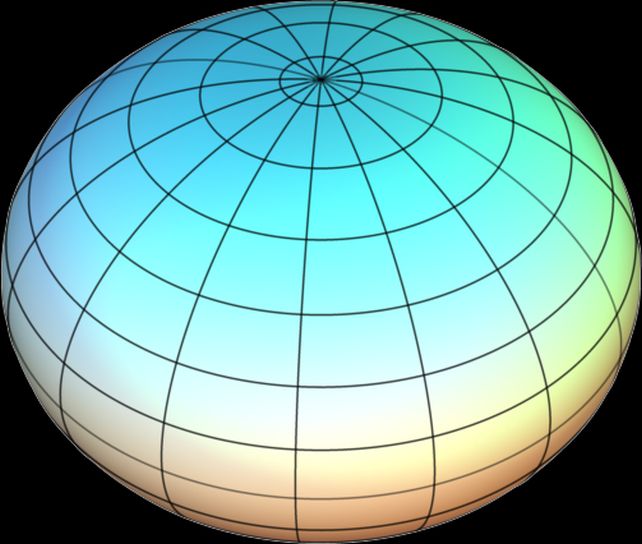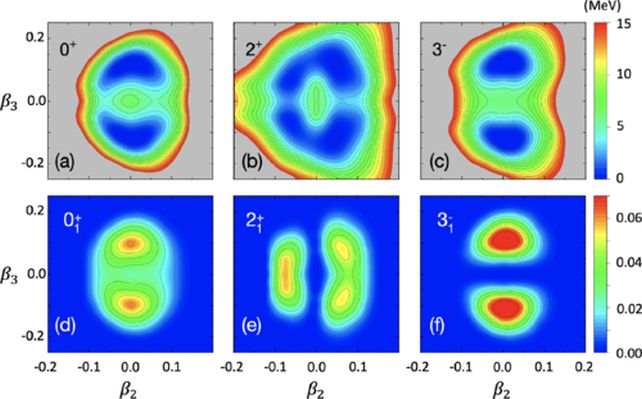ARTICLE AD
 An illustration of the structure of an atom. (KTSDesign/SciencePhotoLibrary/Getty Images)
An illustration of the structure of an atom. (KTSDesign/SciencePhotoLibrary/Getty Images)
An experiment bludgeoning special lead atoms with high-speed particles has revealed a shocking surprise.
Far from the perfect sphere physicists from the University of Surrey expected to find, the heart of the isotope called lead-208 (208Pb) appears unexpectedly squished.
The discovery suggests that atomic nuclei may be more complex than we thought, and may have implications for our understanding of the formation of heavy elements.
"These results are indicative of a time-averaged prolate deformation for the system," the researchers write in their paper. "Thus, even as a cornerstone of the nuclear landscape, 208Pb remains a puzzle for nuclear structure theories."
 An oblate spheroid shape. (AugPi/Wikimedia Commons, CC BY-SA 3.0)
An oblate spheroid shape. (AugPi/Wikimedia Commons, CC BY-SA 3.0)208Pb is a very special atom. When the number of protons or neutrons is what we call a 'magic' number, those nucleons form a fully occupied shell. An atom in which both the protons and the neutrons consist of magic numbers is known as doubly magic; this is the case for 208Pb, which has 82 protons and 126 neutrons.
Doubly magic nuclei are particularly stable against nuclear decay; 208Pb is the heaviest known stable isotope of any element; as such, it's considered an important cornerstone of nuclear physics, and key to understanding doubly magic nuclei across the board.
Because it's so stable, scientists thought that the nucleus must be perfectly spherical. But, when they used the Argonne National Laboratory's GRETINA gamma-ray spectrometer in the US to probe its structure, that's not what they found.
frameborder="0″ allow="accelerometer; autoplay; clipboard-write; encrypted-media; gyroscope; picture-in-picture; web-share" referrerpolicy="strict-origin-when-cross-origin" allowfullscreen>
"We were able to combine four separate measurements using the world's most sensitive experimental equipment for this type of study, which is what allowed us to make this challenging observation," Henderson says.
"What we saw surprised us, demonstrating conclusively that lead-208 is not spherical, as one might naively assume. The findings directly challenge results from our colleagues in nuclear theory, presenting an exciting avenue for future research."
The experiments involved bombarding nuclei of 208Pb with particles accelerated to a jaw-dropping 10 percent of the speed of light – around 30,000 kilometers (19,000 miles) per second. This bombardment excites quantum states in the nucleus; in turn, physicists can analyze these quantum states to reveal the shape of the nucleus itself.
 Energy surfaces for the angular momentum projected at three quantum energy states. (Henderson et al., Phys. Rev. Lett., 2025)
Energy surfaces for the angular momentum projected at three quantum energy states. (Henderson et al., Phys. Rev. Lett., 2025)The researchers took four separate quantum state measurements, combining them to discover the slightly flattened sphere shape at the heart of 208Pb.
Now, it's not as though no one has ever looked at 208Pb before. It's an atomic nucleus that has been studied at length. To discover that its shape is different from what physicists have pictured after all this study is a bit mind-blowing. And, the researchers say, they don't know why it's an oblate spheroid.
It's a discovery that suggests there may be more going on with atomic nuclei than we had assumed, and that more work is needed to uncover their secrets.
"These highly sensitive experiments have shed new light on something we thought we understood very well, presenting us with the new challenge of understanding the reasons why," says nuclear physicist Paul Stevenson of the University of Surrey.
"One possibility is that the vibrations of the lead-208 nucleus, when excited during the experiments, are less regular than previously assumed. We are now refining our theories further to determine whether these ideas are right."
The research has been published in Physical Review Letters.

 3 hours ago
4
3 hours ago
4 

